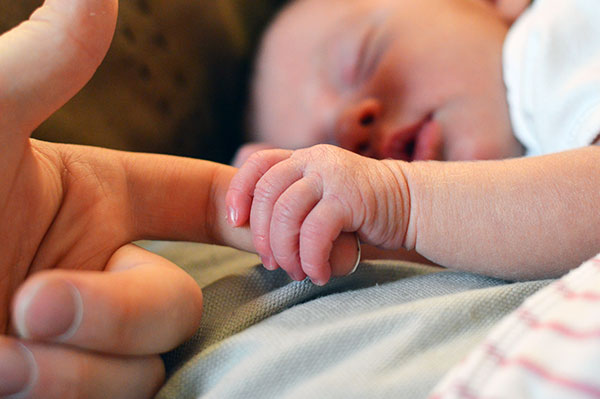Mastitis: How Physiotherapy Can Help and Other Tips
Are you expecting? Or have you just become a new mum for the first time?
Mastitis is a common condition and this article will discuss how you can manage mastitis, including how physiotherapy can help you.
First of all, congratulations! Revel in this amazing experience and enjoy every minute. But secondly, keep yourself informed so you can look after yourself and ultimately your new-born baby.
You may or may not have been educated on the common condition called Mastitis before birth. And you may or may not know that physiotherapy can help if you develop this after birth!
What is Mastitis?
Mastitis is a common condition that causes inflammation to the breast tissue and can become very painful. It occurs after a milk duct becomes blocked leading to a bank up of milk as it’s produced, ultimately causing lumps and inflammation.
It can also occur via bacteria that can enter through a small crack on the nipple, during poor pumping or a poor latch, leading to an infection.
What causes Mastitis?
Mastitis is common, affecting up to 40% of breastfeeding mothers. It usually happens in the first 3 months after birth but can even occur 2 years later.
Don’t think it’s your fault or you’ve caused it but there are plenty of small things you can watch out for. The exact cause of mastitis isn’t always obvious but below are 6 common scenarios that can lead to it:
- Nipple damage
- Poor attachment of your baby to your nipple
- Long breaks between breastfeeding
- Too much milk production
- Ceasing breastfeeding suddenly
- Wearing an overly tight bra
Unfortunately some of the above causes will be out of your control but you can always look at for them.
You can however make sure you wear loose fitted clothing, feed regularly and wean off breastfeeding. Some more tips on how to prevent mastitis can be found later in this article.
What are the Symptoms?
Early symptoms can mimic the feeling you get when you start to contract a cold. This unfortunately means a lot of women don’t realise they have it and it progresses fairly quickly. So look out for:
- Body Aches
- Chills
- Fevers
There are also some other telltale signs you can look out for which don’t necessarily match symptom of a common cold. Some of these include:
- Tender and swollen breasts
- Lumps in the breast (from the banked up milk)
- Burning during feeding (can also happen outside of feed time)
- Red or shiny skin
If you have any of the above signs or symptoms seek the help of your GP. Then think about coming into Sport and Spinal Physiotherapy for treatment.
I think I have Mastitis – what do I do now?!
First of all, don’t panic!
There are many things you can do at home to help clear the blockage but the most important thing is TO KEEP FEEDING your baby!
The milk is safe and healthy and the act of feeding can sometimes clear the blockage on its own. On top of this, did you know we can help at Sport and Spinal Physiotherapy?
Physiotherapy Treatment
Sport and Spinal Physiotherapy can help clear mastitis through the use of therapeutic ultrasound, in conjunction with the below conservative measures.
What is Therapeutic Ultrasound?
Therapeutic ultrasound is a safe, quick and effective modality that can be used to clear mastitis. The ultrasound waves pass through the skin and cause vibration of the local soft tissue.
Many studies have shown that this causes an increase both tissue relaxation and heat, as well as promoting local blood flow.
This causes a decrease in inflammation, as well as decreasing the pain in your breast. And even in the presence of infection many studies have shown that therapeutic ultrasound can help to increase cell wall uptake which increases the effectiveness of antibiotics!
Will it hurt?
Absolutely not, you won’t feel a thing other than mild warmth. It certainly won’t be as painful as mastitis!
We will apply the ultrasound probe to the area of mastitis with conductive gel – this can be a little cold to begin with. Then the heat produced from the probe will come through mildly.
We will then move the probe in circular motions for 8-10 minutes at each blockage. This means you should feel no discomfort at all.
How quickly will it work?
Therapeutic Ultrasound should have a very quick, if not immediate response. One appointment is often enough to clear all mastitis, but a second appointment may be necessary to finish it off completely. Especially if you seek treatment early – recovery should be very quick.
We recommend booking a follow-up appointment in the next 24-48 hours in case a second bout is necessary. Hopefully you won’t need it at all though.
Can I bring my baby?
Yes please! You may want someone to look after them while the ultrasound is being performed but we want you to have your baby immediately after completing.
We advise trying to feed straight after the appointment if possible. You should also try to feed or express every two hours and ensure the affected breast is as well drained as possible.
Other things to try include:
- Feed more often than normal
- Feed with the most painful breast first
- Ensure the breast is very well drained
- Gentle breast massage
- Heat just prior to feeding
- Ice after feeding for pain relief
- Position your baby so their chin “points” to the area of the lump
- Get plenty of rest
- Seek medical help from you GP who will prescribe antibiotics
Antibiotics are not always the cure as mastitis doesn’t always involve an infection.
Even if your mastitis does involve infection many studies have shown that Therapeutic Ultrasound increases cell wall permeability. This means that antibiotic treatment is more effective.
Either way therapeutic ultrasound as a form of treatment for mastitis is becoming increasingly popular and you can see why. It’s easy, effective, non-invasive and non-pharmacological.
So call Sport and Spinal Physiotherapy on 62624464 to book an appointment with one of our Women’s Health Physio’s!
Resources:
https://www.breastfeeding.asn.au/bf-info/common-concerns%E2%80%93mum/mastitis
https://www.pregnancybirthbaby.org.au/mastitis
https://www.thebump.com/a/mastitis


